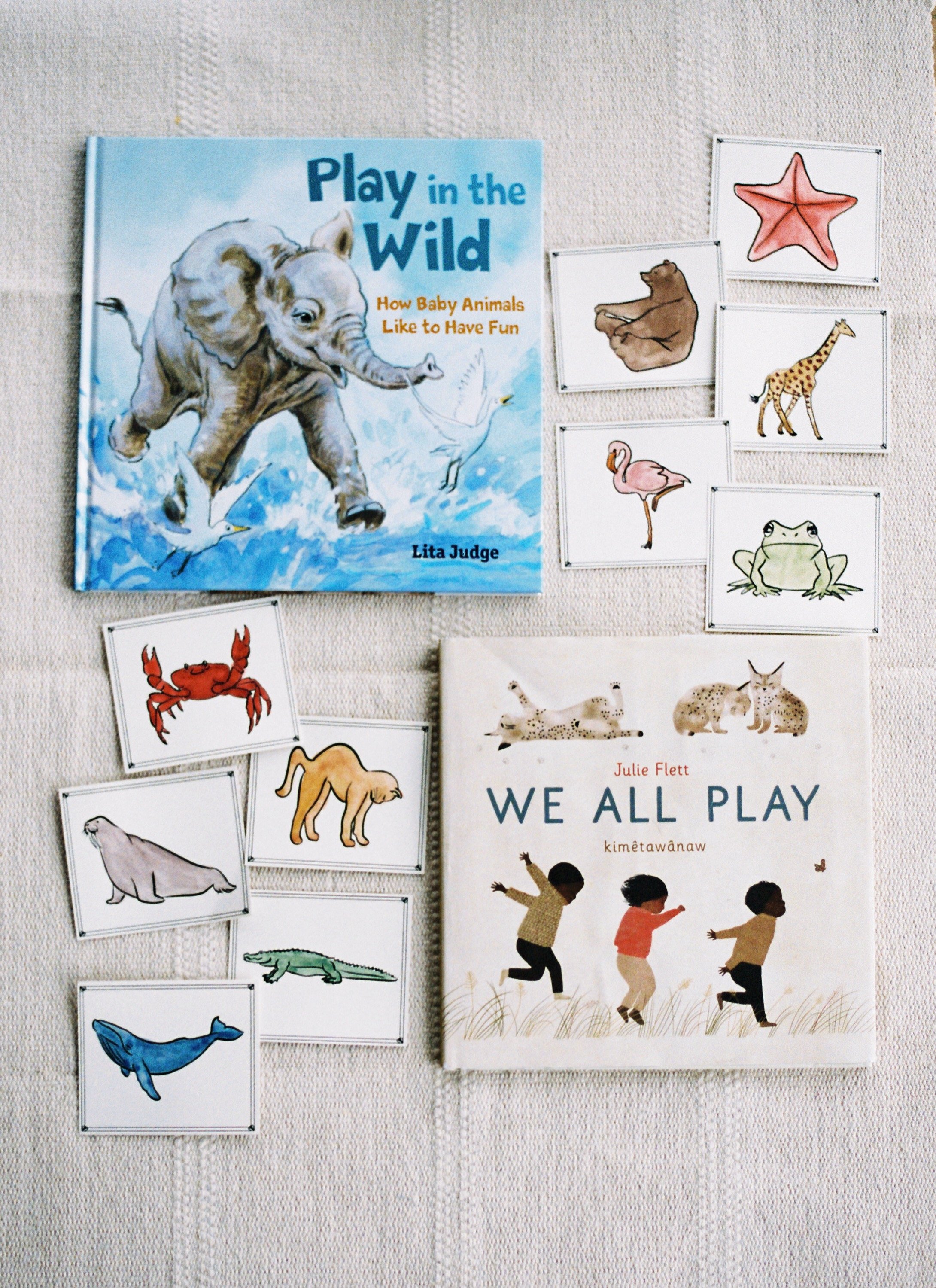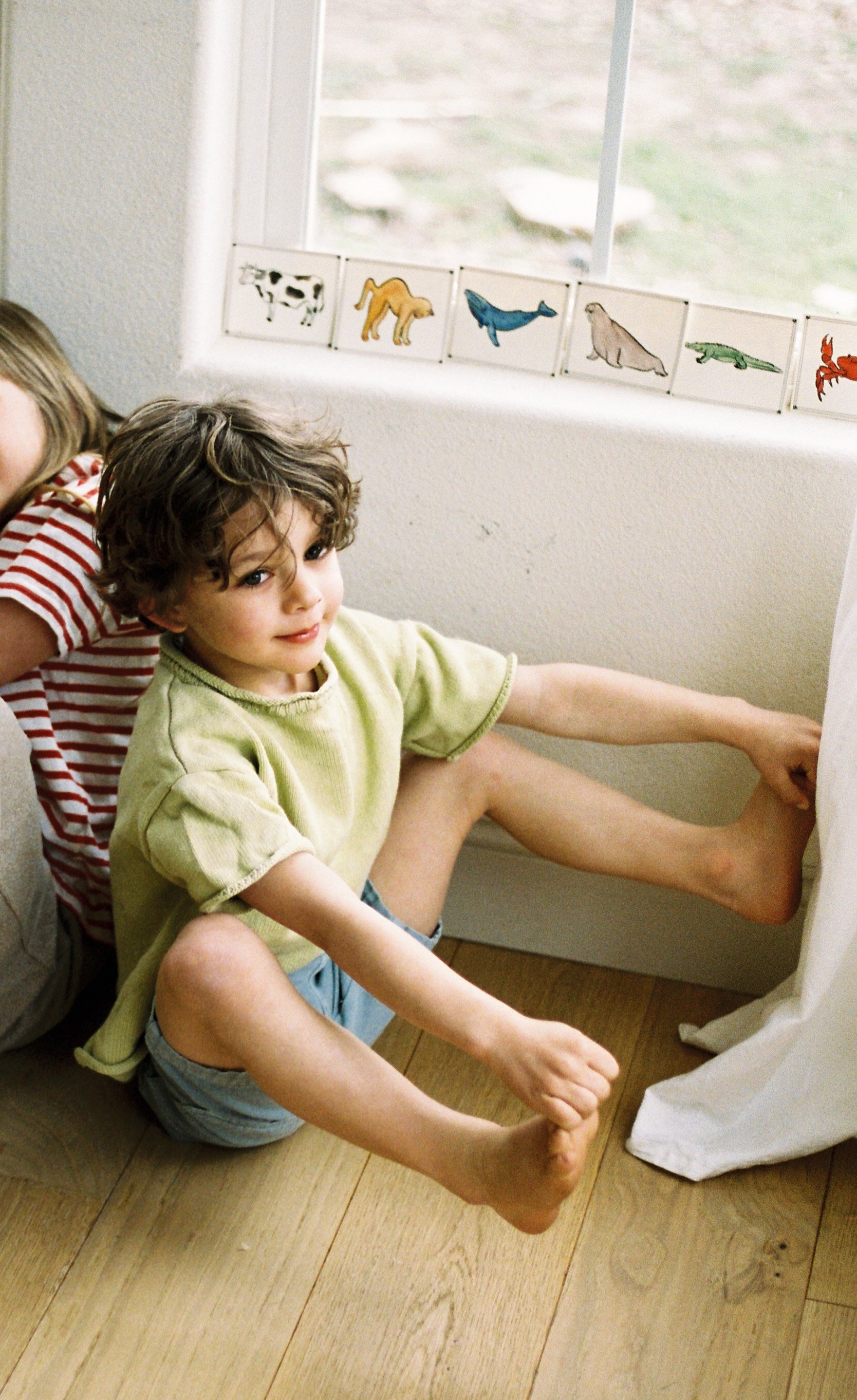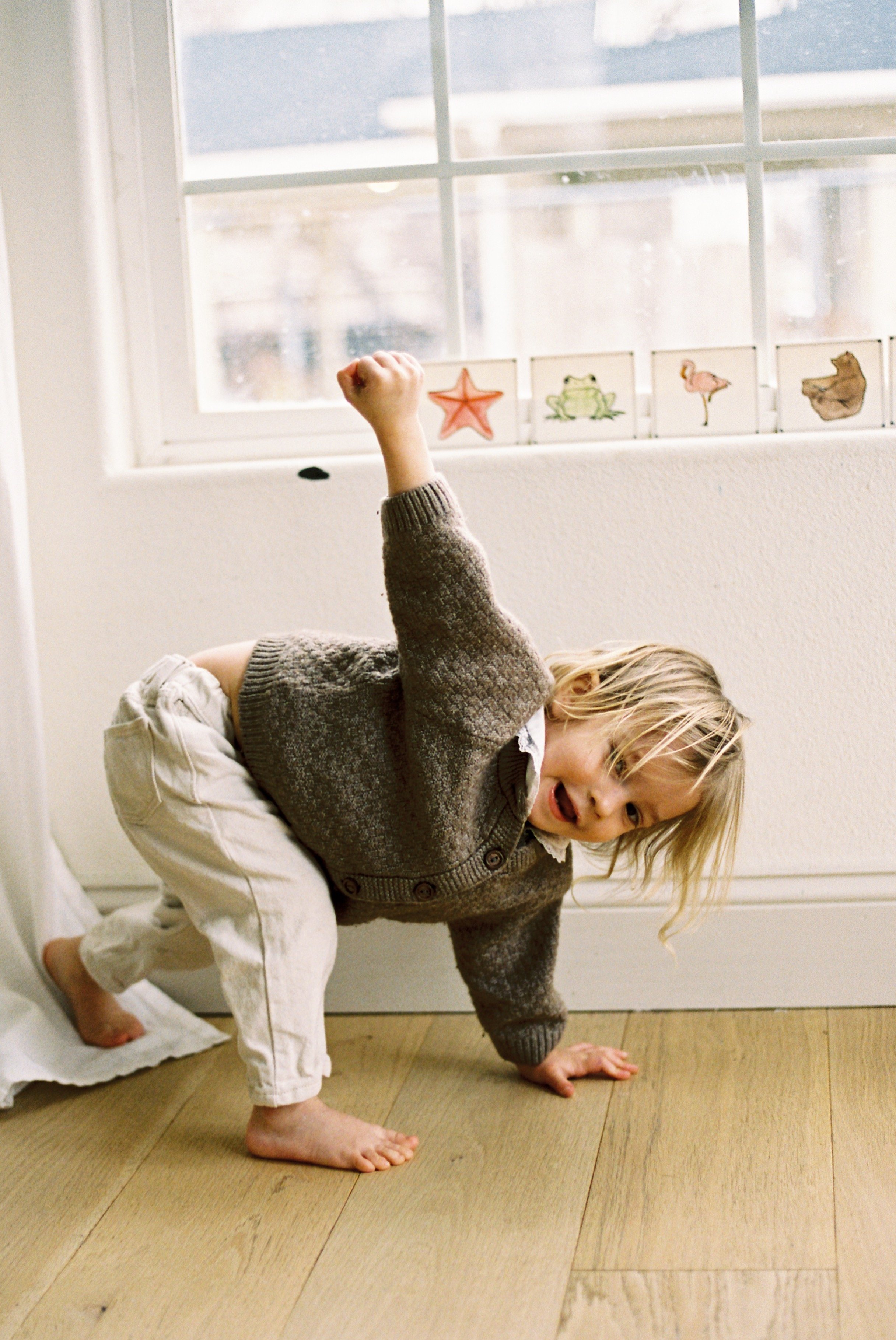
We All Play
LESSON 5
Children explore the importance of play for animals and humans, then engage in a movement activity using imagination and practicing animal movements.
The book “We All Play” by Julie Flett.
The book “Play in the Wild” by Lita Judge. (Optional)
Materials
Gather materials.
Preparations
Facilitate reflective discussion about animal play behaviors, guiding students to express their thoughts.
Lead the movement activity and encourage child to create animal-inspired yoga poses.
Discuss the importance of play for animals and humans.
Create a positive learning environment where students feel comfortable sharing their ideas and experiences.
Objectives for Teachers
Express their own thoughts and ideas about the importance of play.
Engage in a fun movement activity, practicing animal-inspired yoga poses and exploring different ways animals move their bodies.
Demonstrate creativity by selecting and enacting animal poses during the movement activity.
Develop an understanding of the importance of play for animals and humans through story reading and discussions.
Objectives for Children

Collect and Connect
Practice saying the poem ‘Animal Movements’ together with the actions you came up with.
Animal Movements
Snakes slither,
And cat's creep.
Spiders spin,
And leopard's leap.
Turtles trudge,
And bunny's bounce.
Falcon's fly,
And panther's pounce.
Hummingbird's hover,
And fish flop.
Gulls glide,
And rabbit's hop.
-Leslie Tryon

Activity Flow
Begin this lesson by reflecting on the previous lesson. Here are some questions you might ask:
If you were an animal, how would you want to carry your baby?
What other ways do animals carry their young?
Do you remember any of the baby animal names? (Joey, kid, loonlet, cub, lamb, calf, etc.)
2. Next, get cozy and enjoy reading the story "We All Play" or "Play in the Wild," or if you'd like, both! Begin by reading the title and taking a moment to look at the cover illustration. Ask your child what they think the story is going to be about based on the picture on the cover. Both stories show animals moving on the cover. Tell your child that just like us, animals move their bodies in special ways. Then, read the story together to discover the many ways animals move their bodies through play! While reading "We All Play," it might be fun to pause on each page and act out the animal movements shown in the illustrations.
3. After the story initiate a discussion about why play is important for animals. Here are some questions you could ask:
Why do animals play?
Do all animals play the same?
How do animals play?
What do animals learn when they play?
Do you think it's important for humans to play?
Why is play important for children?
How do you like to play?
What do you learn while playing?
4. Play is important for animals and humans alike. It teaches us valuable skills such as problem-solving, cooperation, creativity, and social interaction. Through play, we learn about the world around us, develop physical abilities, and build emotional resilience. It's a natural way for us to explore, learn, and grow, whether we have fur, feathers, or skin!
5. Next, introduce today's fun movement activity. Using the animal cards you printed, create yoga poses for each animal. This activity is open-ended, allowing the child to choose the pose they think best depicts the animal. Join them by sharing which pose you would choose too. If you want, you can paint your cards and laminate them for future use as a fun movement activity. Be sure to hold onto them, we will use them again in the next lesson.
6. After the movement activity, wrap up the lesson by asking your child what pose was their favorite and why. Share your favorite pose as well and consider taking pictures of them for keepsakes!




